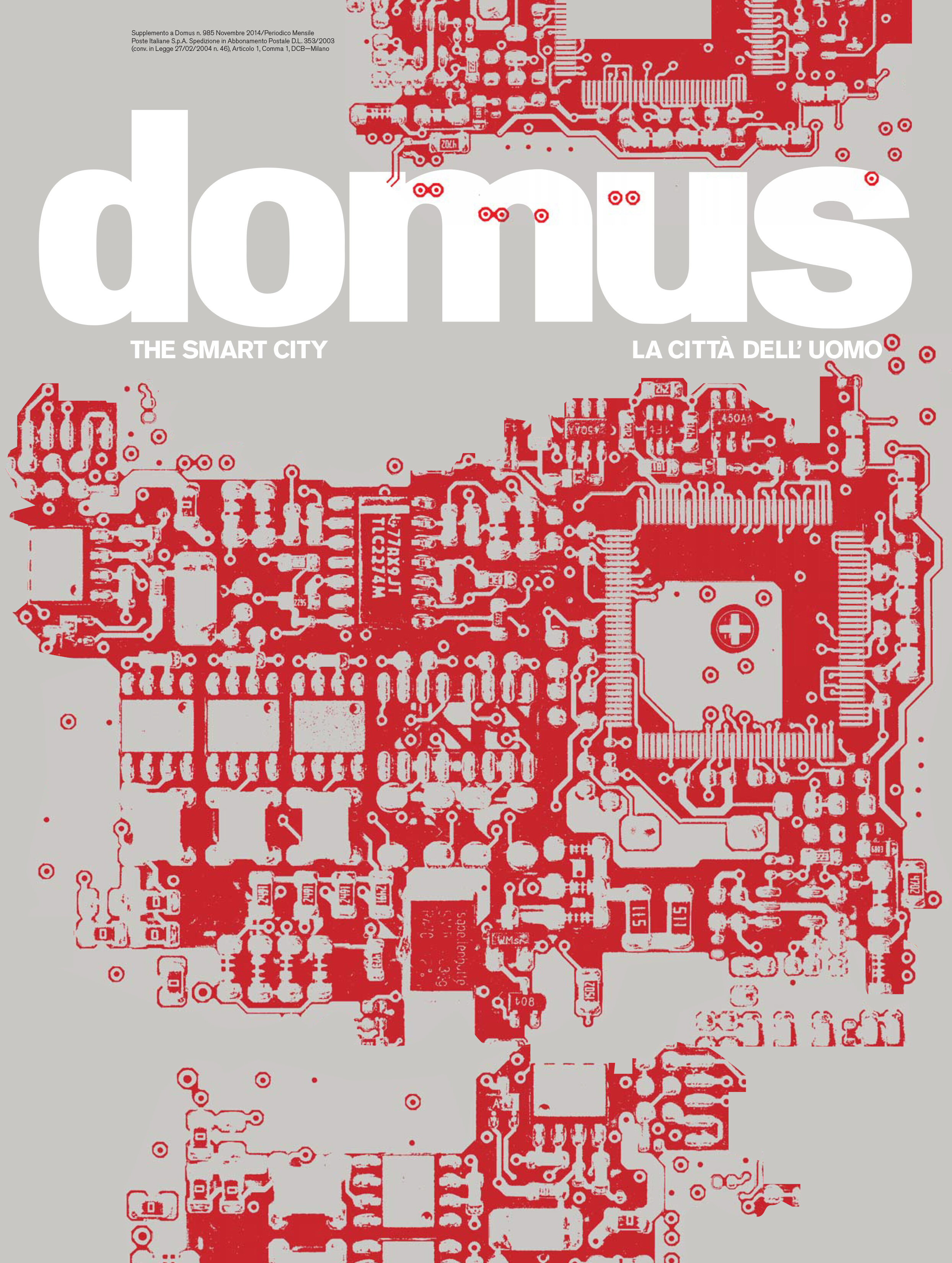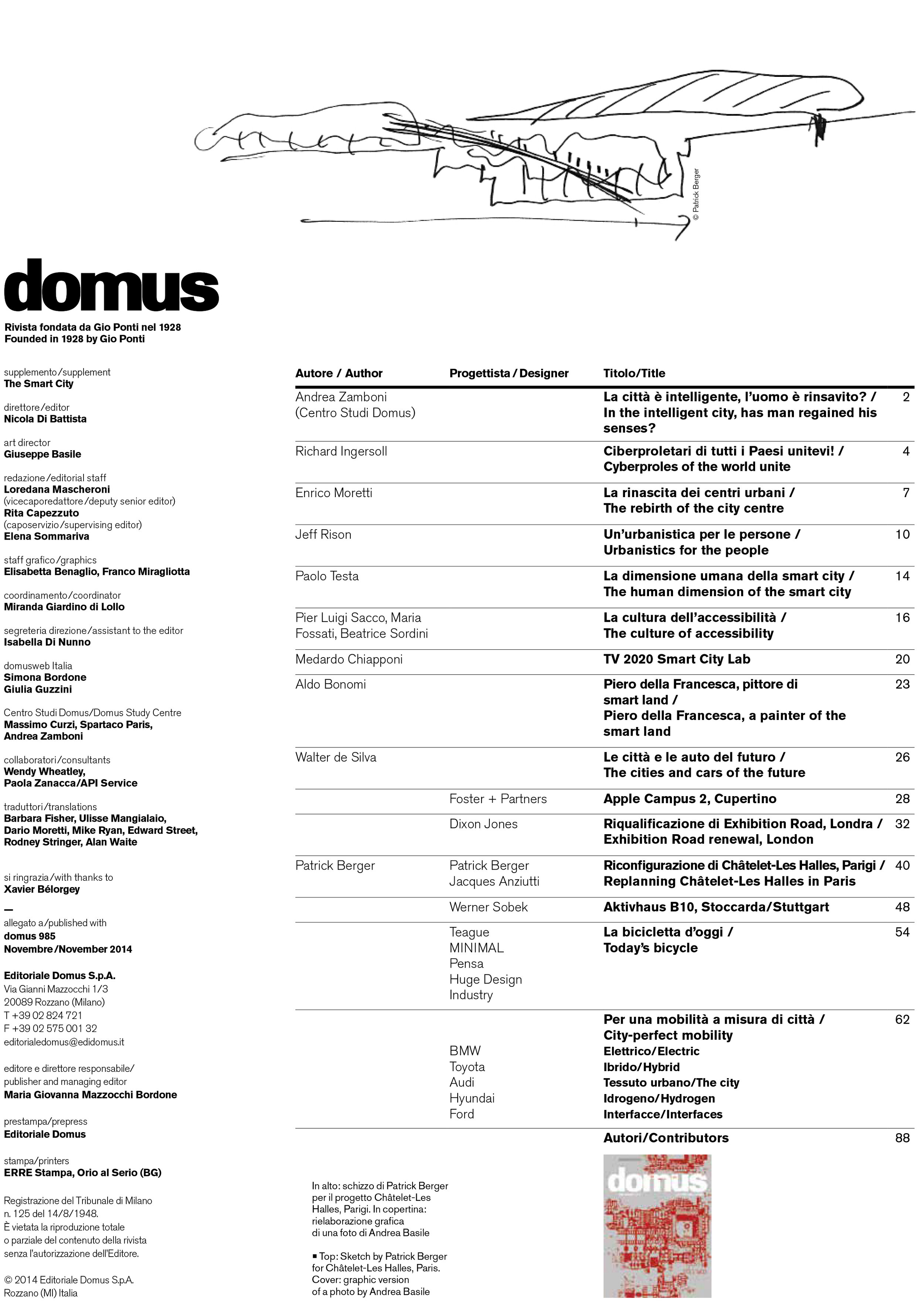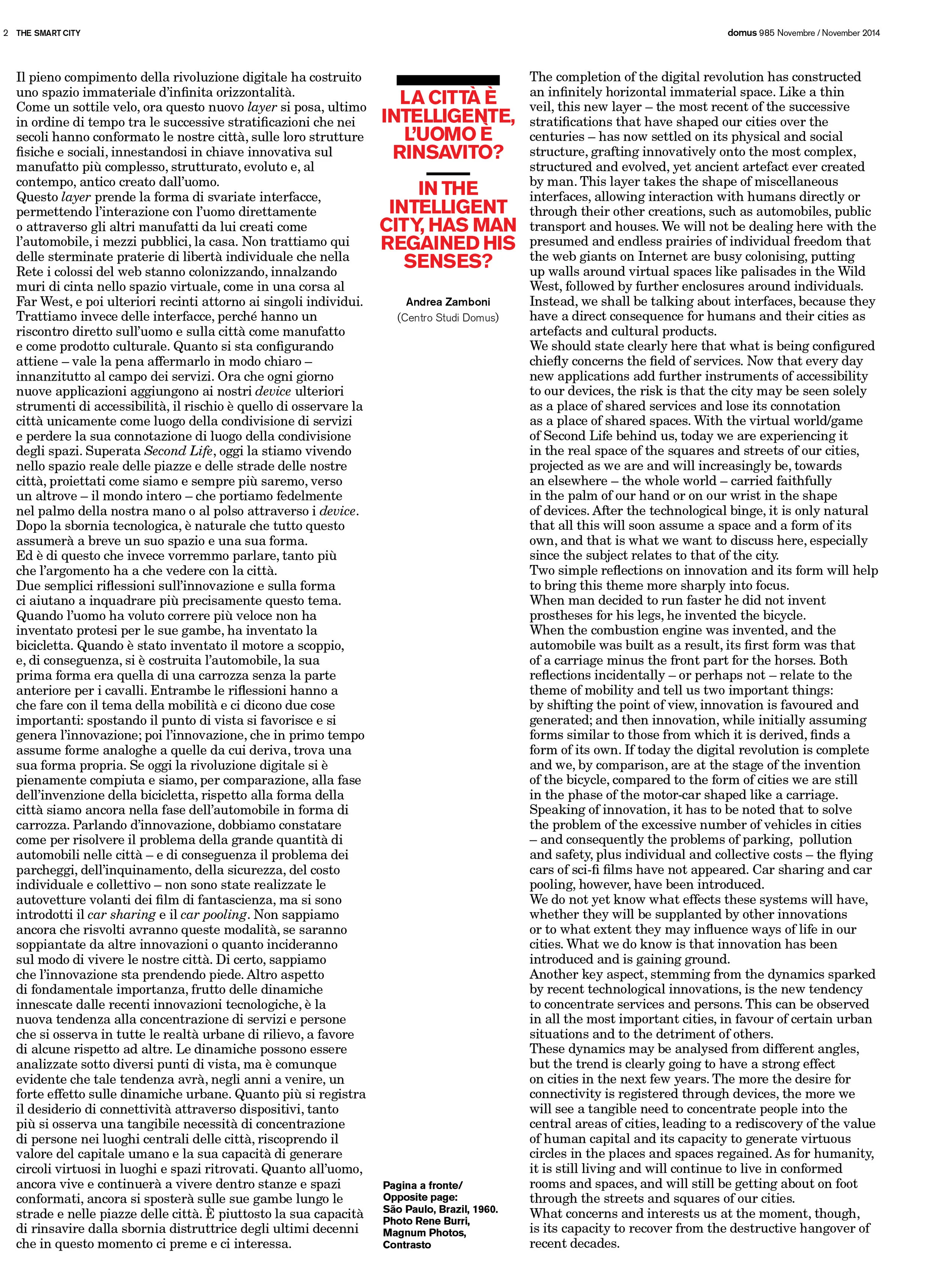Curated by Andrea Zamboni (Centro Studi Domus)
Editoriale Domus, 2014
With texts by: Richard Ingersoll, Enrico Moretti, Jeff Rison, Paolo Testa, Pier Luigi Sacco, Maria Fossati, Beatrice Sordini, Medardo Chiapponi, Aldo Bonomi, Walter de Silva
Projects by: Foster + Partners, Dixon Jones, Patrick Berger and Jacques Anziutti, Werner Sobek
LA CITTÀ È INTELLIGENTE, L’UOMO È RINSAVITO?
Andrea Zamboni (Centro Studi Domus)
The completion of the digital revolution has constructed an infinitely horizontal immaterial space. Like a thin veil, this new layer – the most recent of the successive stratifications that have shaped our cities over the centuries – has now settled on its physical and social structure, grafting innovatively onto the most complex, structured and evolved, yet ancient artefact ever created by man. This layer takes the shape of miscellaneous interfaces, allowing interaction with humans directly or through their other creations, such as automobiles, public transport and houses. We will not be dealing here with the presumed and endless prairies of individual freedom that the web giants on Internet are busy colonising, putting up walls around virtual spaces like palisades in the Wild West, followed by further enclosures around individuals. Instead, we shall be talking about interfaces, because they have a direct consequence for humans and their cities as artefacts and cultural products.
We should state clearly here that what is being configured chiefly concerns the field of services. Now that every day new applications add further instruments of accessibility to our devices, the risk is that the city may be seen solely as a place of shared services and lose its connotation as a place of shared spaces. With the virtual world/game of Second Life behind us, today we are experiencing it in the real space of the squares and streets of our cities, projected as we are and will increasingly be, towards an elsewhere – the whole world – carried faithfully in the palm of our hand or on our wrist in the shape of devices. After the technological binge, it is only natural that all this will soon assume a space and a form of its own, and that is what we want to discuss here, especially since the subject relates to that of the city. Two simple reflections on innovation and its form will help to bring this theme more sharply into focus. When man decided to run faster he did not invent prostheses for his legs, he invented the bicycle. When the combustion engine was invented, and the automobile was built as a result, its first form was that of a carriage minus the front part for the horses. Both reflections incidentally – or perhaps not – relate to the theme of mobility and tell us two important things: by shifting the point of view, innovation is favoured and generated; and then innovation, while initially assuming forms similar to those from which it is derived, finds a form of its own. If today the digital revolution is complete and we, by comparison, are at the stage of the invention of the bicycle, compared to the form of cities we are still in the phase of the motor-car shaped like a carriage. Speaking of innovation, it has to be noted that to solve the problem of the excessive number of vehicles in cities – and consequently the problems of parking, pollution and safety, plus individual and collective costs – the flying cars of sci-fi films have not appeared. Car sharing and car pooling, however, have been introduced. We do not yet know what effects these systems will have, whether they will be supplanted by other innovations or to what extent they may influence ways of life in our cities. What we do know is that innovation has been introduced and is gaining ground. Another key aspect, stemming from the dynamics sparked by recent technological innovations, is the new tendency to concentrate services and persons. This can be observed in all the most important cities, in favour of certain urban situations and to the detriment of others. These dynamics may be analysed from different angles, but the trend is clearly going to have a strong effect on cities in the next few years. The more the desire for connectivity is registered through devices, the more we will see a tangible need to concentrate people into the central areas of cities, leading to a rediscovery of the value of human capital and its capacity to generate virtuous circles in the places and spaces regained. As for humanity, it is still living and will continue to live in conformed rooms and spaces, and will still be getting about on foot through the streets and squares of our cities. What concerns and interests us at the moment, though, is its capacity to recover from the destructive hangover of recent decades.



